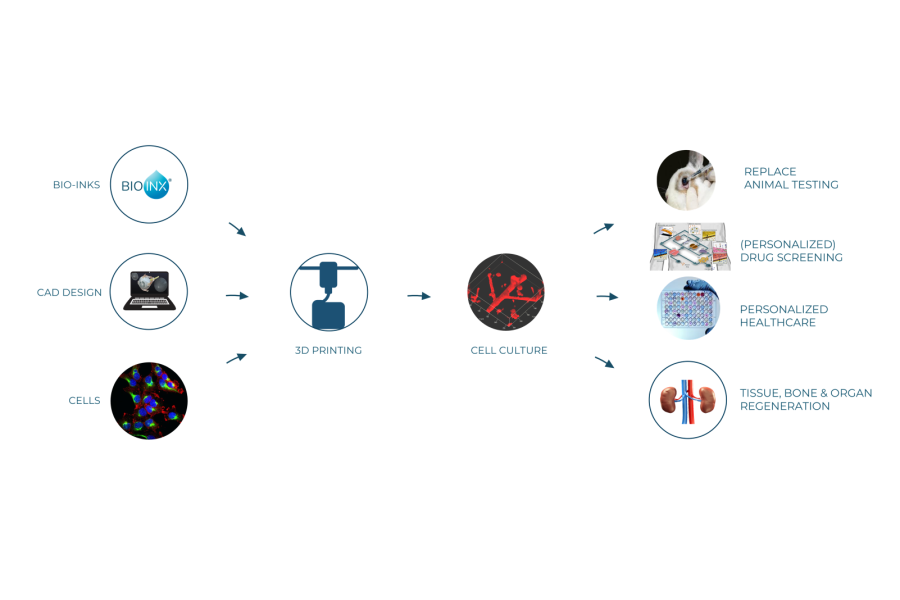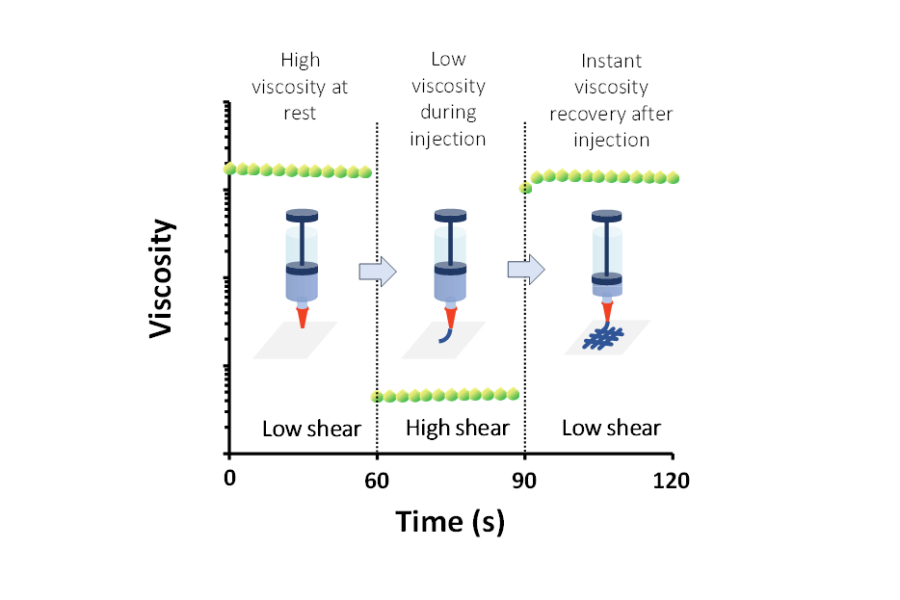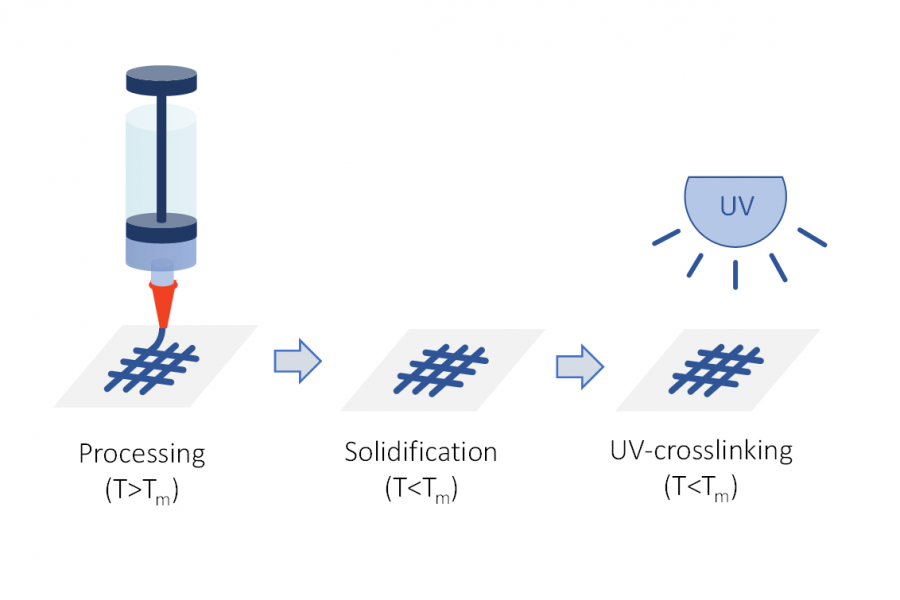Biofabrication and Bioinks
Biofabrication is often defined as the fabrication of complex biologically functional products using living cells, bioactive molecules, biomaterials etc. These complex structures can be generated according to a computer aided image (CAD) using 3D printable materials often referred to as biomaterial inks or cell containing biomaterial inks called bioinks. These materials could be used for several different applications such as support inks or fugitive inks which offer temporary support during the printing process, scaffold inks which provide mechanical support for the seeded cells and extracellular matrix mimics which also allow the direct embedding of cells during the fabrication.
Shear Thinning Hydrogels
Hydrogels are crosslinked networks of hydrophilic polymers. They are able to absorb water up to thousands of times their original weight, providing ideal physicochemical properties for biological applications.
Our technologies offer printable hydrogels with a shear-thinning behavior, enabling an easy flow during injection and an excellent shape-retention after deposition.
Shear-thinning behaviour is very beneficial for deposition-based 3D printing. This results in more straightforward processing, as during the extrusion, shear forces are exerted on the material which results in a liquid behaviour. After deposition, the shear forces are no longer present and the ink undergoes a drastic viscosity increase resulting in an optimal shape retention. Therefore, this technology allows for a good control over the scaffold architecture which results in a high print fidelity.
The printed scaffolds exhibit robust mechanical characteristics along with excellent cell interactivity, offering a suitable platform for cell seeding for soft tissue engineering applications.
Curasol Technology
Our patented CURASOL© technology offers UV-crosslinkable solid inks, enabling solvent-free fabrication of robust hydrogel or biodegradable scaffolds with a well-defined architecture. This technology provides inks with a faster UV-crosslinking reaction compared to their analogs that are irradiated in the molten state.
This technology addresses some of the processing limitations related to traditional photo-crosslinkable polymers by offering an excellent printing fidelity by printing from the molten state along with an efficient crosslinking.
Thanks to the CURASOL© technology, UV-induced crosslinking of inks in the solid state occurs 5 times faster compared to the inks in the molten state, thereby offering reduced irradiation times. The printed scaffolds offer stable or biodegradable platforms for cell seeding that can be implemented for harder tissues (e.g. cartilage).



